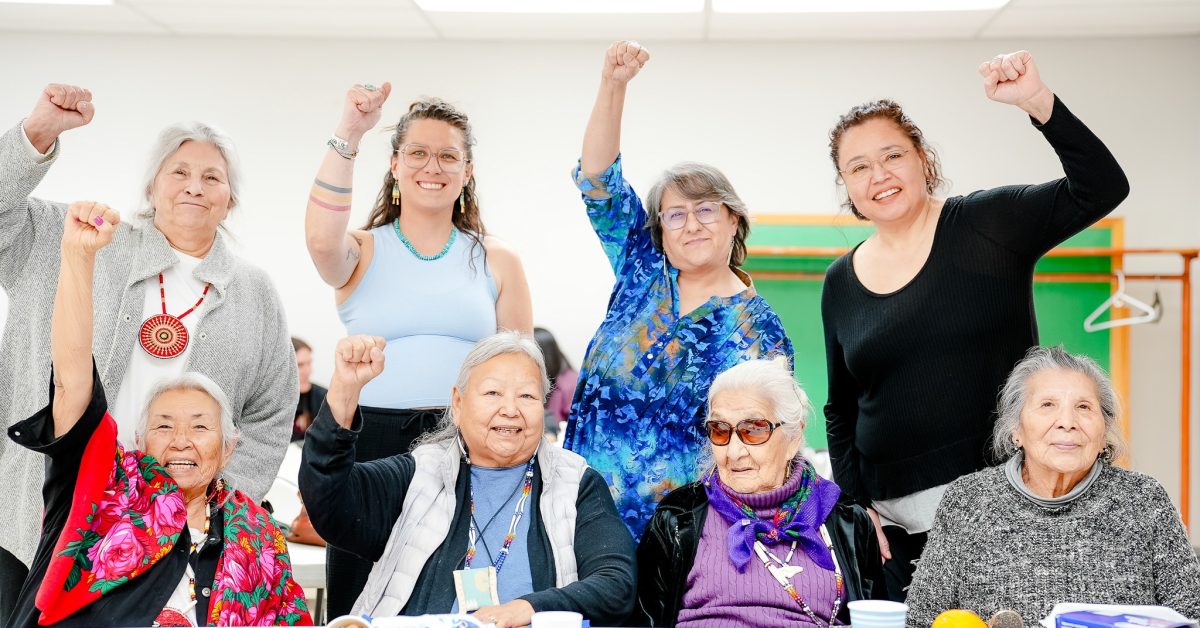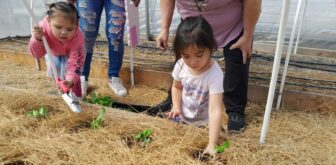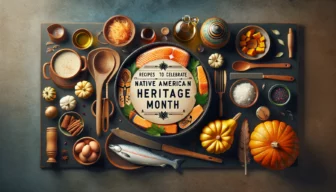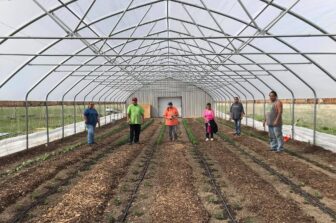Cultural sovereignty is about more than preserving traditions. It is the responsibility to care for the lands, waters, and sacred places that make us whole. Our survival depends on these relationships, and protecting them is protecting ourselves.
For 30 years, the Brave Heart Society has embodied this vision. What began in November 1994, when 25 Dakota women gathered to pray for relief from violence, drugs, and colonial abuse, has grown into a movement that reclaims culture and restores balance. Guided by prayers placed in Rapid Creek, they created a 50-year plan reaching to 2057—a vision for a “super generation” of Dakota-speaking families and strong Dakota Oyate.
Protecting Land and Food
Food and land sovereignty are at the heart of cultural sovereignty. Brave Heart began with co-op and box gardens and now tills more than 100 tribal gardens each spring. Their Collective Farming Project restores Native grasslands through organic hay production on 160 acres—making them the only Native land lessors on the Yankton Reservation.
By planting and tending gardens, families pass down traditional knowledge of foods, soils, and seasons to younger generations. Leasing and restoring Native grasslands strengthens local food systems and reduces dependence on outside markets, while organic hay production creates a sustainable economic base. These practices not only reconnect families to the land but also equip the community with tools for long-term resilience—healthier diets, stronger local economies, and the continuation of Dakota ways of living.
Water Sovereignty
The Missouri River is more than a resource—it is a relative. Brave Heart Society has worked for years to define water quality on the Yankton Reservation and to affirm the sovereignty of the river itself.
Water sovereignty also means having the knowledge and tools to protect that relationship. By working to obtain their own hydrological data, Brave Heart ensures the Ihanktonwan Oyate can participate directly in policy discussions, uphold treaty rights, and resist industrial demands on the river. Accurate water data strengthens sovereignty by putting decision-making back into Dakota hands rather than outside agencies.
Through co-management planning, Brave Heart is advancing a vision where the river is recognized as a living relative whose health sustains ceremonies, culture, and daily life. Protecting the Missouri is not only environmental stewardship—it is ensuring that future generations inherit clean, living water and the teachings tied to it.
Ceremony and Story
Cultural sovereignty also lives in ceremony. The Isnati Coming of Age Ceremony, now entering its 28th year, has guided more than 180 girls through this sacred rite. As one of the Seven Sacred Rites of the Dakota people, Isnati is not only a personal milestone but a collective ceremony that strengthens whole families and communities. A long-term study is now documenting what has always been known—that traditional ceremonies nurture resilience, identity, and well-being across generations.
The Waterlily Storytelling Institute recently celebrated 20 years of storytelling, honoring Dakota scholar Ella Cara Deloria, Anpetu Was’te (Good Day Woman). For four days and nights, stories are told in the old way, carrying forward language, law, and the values of social grace. These gatherings ensure that oral tradition remains central to Dakota identity, reminding each generation of their responsibilities to one another and to the land.
Knowledge for Future Generations
Each summer, Brave Heart hosts its Field School, bringing Native people together to learn prairie ecology, buffalo management, fire stewardship, and more. Participants range from toddlers to elders, making the school a true community learning space. The program bridges Western science with Indigenous knowledge, reminding participants that Native people have always been scientists and caretakers of the land. By reframing ecology and archaeology as long-held Indigenous practices, the Field School challenges colonial narratives and prepares a new generation of Native scientists and cultural leaders.
The Medicine Garden, a three-acre teaching space, is also taking root after years of planning. Created to honor plant relatives and teach ecological practices, it has become a place where families can harvest medicines and learn their cultural significance. Recently, Brave Heart planted čaŋšaša (red willow), once abundant but largely wiped out after the construction of the dam. Its return is both ecological and cultural restoration, renewing ceremonies and strengthening relationships with the land.
A Living Vision
From prayers in 1994 to the present, Brave Heart Society has shown that cultural sovereignty is not abstract—it is lived every day in gardens, rivers, ceremonies, and classrooms. As they look toward 2057, their work continues to honor ancestors, strengthen the Dakota Oyate, and prepare future generations to live as Dakota-speaking families rooted in land, water, and culture.
Learn more about Native Sovereignty here: https://indianyouth.org/what-is-sovereignty/







